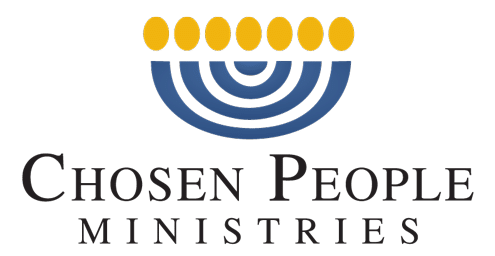Hanukkah: Countdown to Messiah
On Hanukkah, the Feast of Dedication, Jewish people remember one of the shining moments in Israel’s history. It is a glorious story of the best kind–a righteous underdog battling against seemingly insurmountable odds and prevailing. The mighty Maccabees rallied a beaten and dispirited people and turned them into winners.
Today, Hanukkah is a festival with special foods and activities for Jewish people everywhere. Jewish children play with the dreydl, a top with Hebrew letters that proclaim “A Great Miracle Happened There.”
Families also celebrate together and eat latkes – potato pancakes fried in oil – or sufganiyot – jelly-filled deep-fried doughnuts – to commemorate the great miracle. For as the legend is told, when the Jewish people recaptured and cleansed the Temple in Jerusalem, a one-day’s supply of holy lamp oil lasted the eight days necessary to procure more. For this reason, Hanukkah is celebrated for eight days. Each evening, another light of the menorah is added in gratitude for God’s faithfulness.
United Under Persecution
The Temple was liberated by a family named the Maccabees (Maccabee means “Hammer”–a title born of their bravery and seemingly supernatural strength). The Maccabees, or Hasmoneans, were a family from the town of Modi’in that was headed by a priest named Mattathias. The courageous Maccabees embody the story of Hanukkah and the Jewish resistance to oppression that has inspired generations.
At that time, Antiochus Epiphanes, the wicked Seleucid monarch, had done all he could to stamp out the Jewish faith. When at last he ordered the Jewish people to worship him, Mattathias and his sons, Judah, Jonathan and Simon, rose up, rallied their followers and defeated him.
After Mattathias died in about 166 B.C., Judah assumed the mantle of leadership. Under his able command, the Jewish people scored victory after victory. Traditionally, Hanukkah celebrates the capture of Jerusalem and rededication of the Temple in 164 B.C. But as we follow history’s tale, we shall see that it leads us directly to a world that saw the arrival of Messiah Jesus.
Victory and Its Aftermath
The Hasmoneans gradually extended the borders of Judea and gained independence. The challenge that now faced them was to make the transition from a guerrilla fighting force to leading an independent country. During centuries of exile, the dream of a Davidic king had seemingly died. Under Persian rule, the High Priesthood had become the most powerful office in Jewish life.
In 140 B.C., the Great Assembly, the ruling body of the Jewish people, made Simon Maccabee the High Priest–despite the fact that he was unqualified to hold this all-important office. For although the Hasmoneans were a well-respected priestly family, they were not descendants of Zadok (I Chronicles 24:1-3), the family line through which the high priesthood had been chosen.
The Great Assembly also vested Simon with authority as the ruler of the Jewish people and made these offices hereditary. However, the Great Assembly added this “sunset clause” to Hasmonean authority: “until a true prophet shall arise” (1 Maccabees 14:37).
Even so, the Hasmoneans were poised to consolidate their political power even as they had consolidated their military strength.
The Fall of the Hasmoneans
The ruling houses of the Ancient Near East were hotbeds of intrigue and corruption. The Hasmoneans, with whom the hopes of Israel had been so firmly placed, fought among themselves as they spiraled downward in successive generations. Simon, the last of the brave sons of Mattathias, was murdered at the instigation of his son-in-law.
Although Simon’s son, John Hyrcanus, assumed power and continued to add to Israel’s territory, the Greek style of the Hasmonean court became increasingly at odds with the mood of the people. John’s heir, Aristobulus, further angered the populace by taking the title of King. This greatly antagonized the rising party of the Pharisees, who rightly pointed out that the Hasmoneans were not of the line of David.
Things grew even worse when Aristobulus’ widow, Salome Alexandra, married Alexander Jannaeus and proclaimed him High Priest. Again, the Pharisees were offended, for the Torah explicitly forbids the High Priest from marrying a widow (Leviticus 21:14). An uprising broke out in 90 B.C., and Alexander responded with mass executions. He crucified 800 rebels, many of them Pharisees.
The rise of the Roman Empire proved to be too much. The final defeat of Antigonus Mattathias, the great-great grandson of that first courageous Mattathias, came in 37 B.C. The end of the house of the Hasmoneans ushered in the house of Herod and with it, the earthly ministry of Jesus the Messiah.
A True Prophet Arises
The history of the Hasmonean dynasty is an object lesson about imposing “man’s way” upon God’s will. There is only one figure who fulfills the job description of the “true prophet” envisioned by the Great Assembly. It is Jesus, the rightful holder of the office of High Priest, who has offered Himself as the lasting and perfect sacrifice (Hebrews 7:23-28). He alone is the true Son of David, the King of Kings Who shall reign forever (Revelation 17:14).
These lessons from Israel’s ancient history should not be lost on the Israel of the 21st century, or on us. Although Israel may be tempted to trust in ambassadors or weapons to guarantee the security that only God can provide, the nation will one day know that prophecy, priesthood and royalty flow from only one source: the God of Abraham, Isaac and Jacob–and the Messiah whom He has sent.


